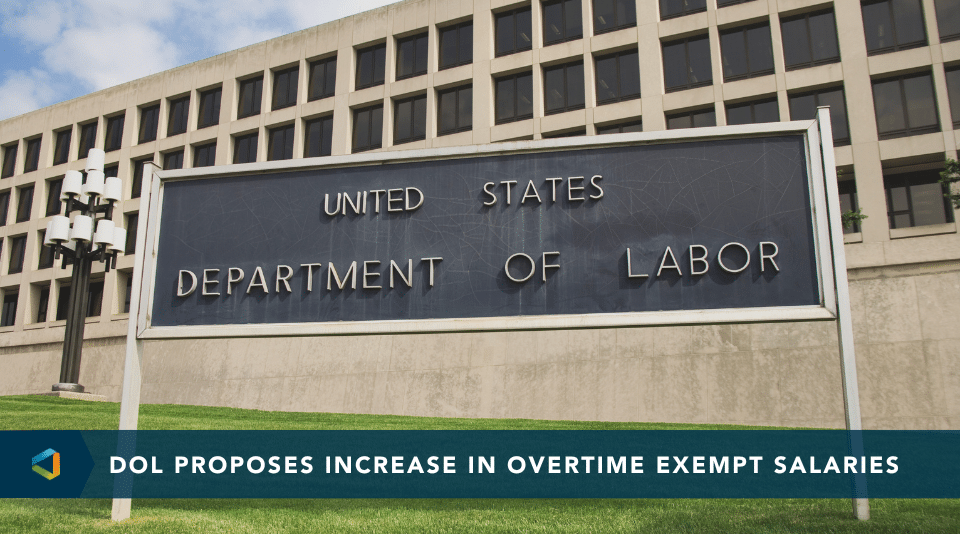Better Benefits, Compliance Confidence
Department of Labor Rescinds 2018 Rule Defining Employer Association Health Plans
Department of Labor Rescinds 2018 Rule Defining Employer Association Health Plans
After years of legal uncertainty, the DOL has formally nixed a previous final rule that made it easier for unrelated employers to band together and form association health plans (AHPs).
The Department of Labor (DOL) has released a final rule that entirely withdraws a prior 2018 final rule on association health plans (AHP). The 2018 final rule proposed a new way for employer groups and working owners to combine for purposes of health insurance. The 2018 final rule would have made it easier for unrelated employers to form single ERISA plans.
The 2018 final rule faced an immediate legal challenge from eleven states and the District of Columbia, which claimed the DOL was taking liberties with ERISA’s “employer” definition. In 2019, a federal judge agreed and took steps to vacate the rule. Since then, current and hopeful AHPs have been left in limbo. According to the DOL, the withdrawal of the 2018 final rule is intended to resolve any uncertainty regarding the status of the criteria for forming an AHP, among other things. The final rule is scheduled to take effect on June 29, 2024 (60 days after its publication in the Federal Register on April 30).
AHPs – Single ERISA Plans
An AHP is a type of ERISA-covered group health plan sponsored by a group or association of employers (instead of a single employer) to provide health coverage to employees of the AHP’s employer members. When an AHP is treated as a single ERISA plan, all employees covered by the plan are considered when determining the insurance market rules (that is, small group or large group) that apply to the plan. This allows small businesses to join together and enjoy many of the regulatory and negotiating advantages that large employers experience.
The DOL has released a series of advisory opinions that establish a narrow pathway for an AHP to qualify as a single ERISA plan (e.g., DOL Advisory Opinion 2008-07A). The DOL applies a facts and circumstances approach to determine whether a group or association of employers is a bona fide employer group or association capable of sponsoring an ERISA plan on behalf of its employer members.
The Final 2024 Employer Association Health Plan Rule
AHP rules will now return to what they were pre-2018. In defining an employer, ERISA now authorizes some employer associations that act “in the interest of an employer” to qualify as an employer. In other words, these associations would need to take on the responsibilities of an employer regarding the operation and administration of the benefit plan. The DOL has been very selective in determining which associations satisfy this requirement. Only those entities satisfying the requirements of a “bona fide association” qualify as acting “in the interest of an employer.”
The final rule is effective as of June 29, 2024. Essentially, AHP rules are returning to the pre-2018 status quo.
The pre-2018 rule guidance applies a facts-and-circumstances approach to determine whether a group or association of employers is a bona fide employer group or association capable of sponsoring an ERISA plan on behalf of its employer members. Under this approach, there are three general criteria:
- Bona Fide Group or Association: Whether the entity has business or organizational purposes and functions unrelated to the provision of benefits;
- Commonality of Interest: Whether the employers share a commonality and genuine organizational relationship unrelated to the provision of benefits; and
- Control: Whether the employers that participate in a benefit program, either directly or indirectly, exercise control over the program, both in form and substance.
Multiple Employer Welfare Arrangements (MEWAs)
An AHP offered by a bona fide group or association of employers under the pre-rule guidance is subject to all of the ERISA provisions applicable to group health plans, including the fiduciary responsibility and prohibited transaction provisions.
In addition, such AHPs are MEWAs. States may apply and enforce their State insurance laws with respect to AHPs. In general, ERISA allows for the application and enforcement of State insurance laws with respect to any MEWA.
The extent to which State insurance laws may be applied to a MEWA that is an ERISA-covered plan is dependent on whether or not the plan is fully insured. While this most recent development is intended to create a sense of finality, it is possible that the DOL may reexamine the criteria under which groups or associations of employers can sponsor AHPs in the future. As such, employers are encouraged to continue monitoring the situation.




